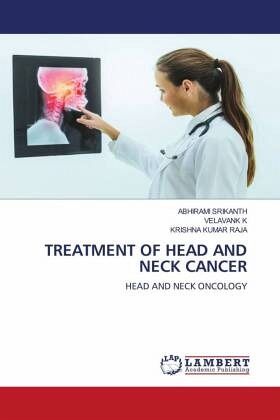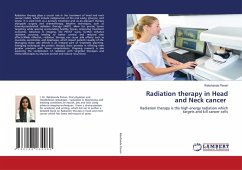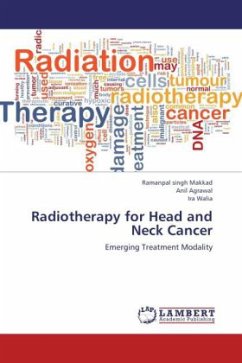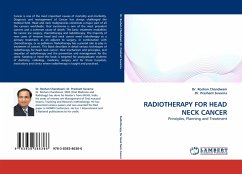
TREATMENT OF HEAD AND NECK CANCER
HEAD AND NECK ONCOLOGY
Versandkostenfrei!
Versandfertig in 6-10 Tagen
29,99 €
inkl. MwSt.

PAYBACK Punkte
15 °P sammeln!
Head and neck cancer develops from tissues in the lip and oral cavity, larynx, salivary glands, nose, sinuses or the skin of the face. Symptoms predominantly include a sore throat or change in the voice. In those with advanced disease, there may be unusual bleeding, facial pain, numbness or swelling, and visible lumps on the outside of the neck or oral cavity. The majority of head and neck cancer is caused by the use of alcohol or tobacco, with increasing cases linked to the human papillomavirus (HPV). After a histologic diagnosis has been established and tumor extent determined, the selection...
Head and neck cancer develops from tissues in the lip and oral cavity, larynx, salivary glands, nose, sinuses or the skin of the face. Symptoms predominantly include a sore throat or change in the voice. In those with advanced disease, there may be unusual bleeding, facial pain, numbness or swelling, and visible lumps on the outside of the neck or oral cavity. The majority of head and neck cancer is caused by the use of alcohol or tobacco, with increasing cases linked to the human papillomavirus (HPV). After a histologic diagnosis has been established and tumor extent determined, the selection of appropriate treatment for a specific cancer depends on factors like tumor site, relative morbidity of various treatment options, concomitant health problems, social and logistic factors, previous primary tumors, and the person's preference. Treatment planning generally requires a multidisciplinary approach involving specialist surgeons and medical and radiation oncologists. Surgical resection and radiation therapy are the mainstays of treatment for most head and neck cancers. This book gives a summary of all the available treatment options in patients with head and neck cancer.












